Themed collection Most popular 2019-2020 catalysis articles

Revealing the nature of active sites in electrocatalysis
In this perspective, key aspects for the identification, design and optimization of active centers at the surface of electrocatalysts are analyzed.
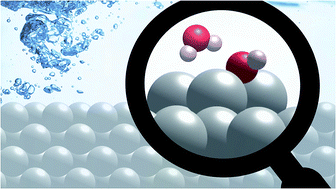
Chem. Sci., 2019,10, 8060-8075
https://doi.org/10.1039/C9SC02654A
Recent advances in photoredox and nickel dual-catalyzed cascade reactions: pushing the boundaries of complexity
Cascade reactions that produce multiple chemical bonds in one synthetic operation are important in the efficient construction of complex molecules.

Chem. Sci., 2020,11, 4051-4064
https://doi.org/10.1039/D0SC00712A
Development of tethered dual catalysts: synergy between photo- and transition metal catalysts for enhanced catalysis
A series of tethered dual catalysts were developed, with catalytic investigations demonstrating that tethering enhances photocatalysis and thermally activated Ir catalysis. In addition, sequential and switchable catalytic reactivity was achieved.
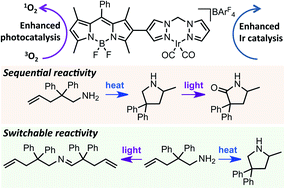
Chem. Sci., 2020,11, 6256-6267
https://doi.org/10.1039/D0SC02703K
Thermal effects – an alternative mechanism for plasmon-assisted photocatalysis
A simple Arrhenius-based theory of heating, rather than “hot electrons”, can reproduce some high-profile photocatalysis experimental results to remarkable accuracy. Flaws in temperature measurement may have led to wrong conclusions.
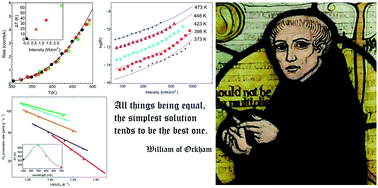
Chem. Sci., 2020,11, 5017-5027
https://doi.org/10.1039/C9SC06480J
Catalytic resonance theory: parallel reaction pathway control
Branched catalytic reaction networks with oscillating chemical pathways perfectly select for reaction products at varying frequency.
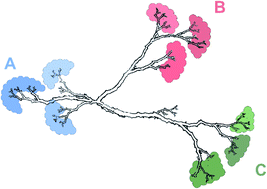
Chem. Sci., 2020,11, 3501-3510
https://doi.org/10.1039/C9SC06140A
In situ monitoring of mechanochemical synthesis of calcium urea phosphate fertilizer cocrystal reveals highly effective water-based autocatalysis
Using the mechanosynthesis of the fertilizer cocrystal calcium urea phosphate as a model, we provide a quantitative investigation of chemical autocatalysis in a mechanochemical reaction.
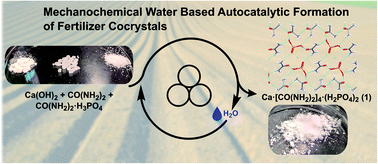
Chem. Sci., 2020,11, 2350-2355
https://doi.org/10.1039/C9SC06224F
Free energy of proton transfer at the water–TiO2 interface from ab initio deep potential molecular dynamics
TiO2 is a widely used photocatalyst in science and technology and its interface with water is important in fields ranging from geochemistry to biomedicine.
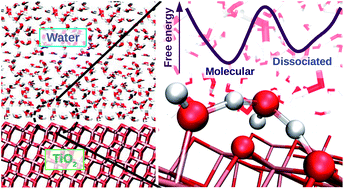
Chem. Sci., 2020,11, 2335-2341
https://doi.org/10.1039/C9SC05116C
A shape changing tandem Rh(CNC) catalyst: preparation of bicyclo[4.2.0]octa-1,5,7-trienes from terminal aryl alkynes
Two catalysts for the price of one: a shape changing rhodium catalyst enables preparation of unusual isobenzenes using a one-pot procedure.
![Graphical abstract: A shape changing tandem Rh(CNC) catalyst: preparation of bicyclo[4.2.0]octa-1,5,7-trienes from terminal aryl alkynes](/en/Image/Get?imageInfo.ImageType=GA&imageInfo.ImageIdentifier.ManuscriptID=C9SC06153C&imageInfo.ImageIdentifier.Year=2020)
Chem. Sci., 2020,11, 2051-2057
https://doi.org/10.1039/C9SC06153C
Efficient trinuclear Ru(II)–Re(I) supramolecular photocatalysts for CO2 reduction based on a new tris-chelating bridging ligand built around a central aromatic ring
We have designed and synthesized a new tris-chelating polypyridine ligand (bpy3Ph) suitable to be used as a bridging ligand (BL) for constructing various supramolecular photocatalysts.
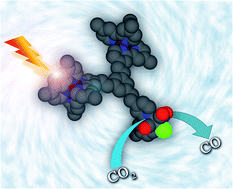
Chem. Sci., 2020,11, 1556-1563
https://doi.org/10.1039/C9SC04532E
Reactivity control of a photocatalytic system by changing the light intensity
By using simple optics such as a lens, switching between one- and two-photon driven reaction mechanisms became feasible, which allows the control over the main products of photochemical reactions.
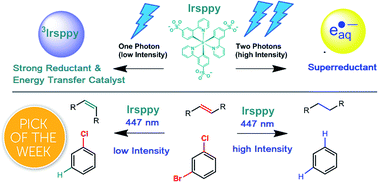
Chem. Sci., 2019,10, 11023-11029
https://doi.org/10.1039/C9SC04584H
A visible-light mediated three-component radical process using dithiocarbamate anion catalysis
A three-component radical process is reported that, by coupling alkyl chlorides, maleimides, and heteroaromatic fragments, installs multiple biologically relevant heterocycles within complex cascade products. This method, which generates radicals via an SN2-based photochemical catalytic mechanism, activates substrates incompatible with or inert to classical radical-generating strategies.
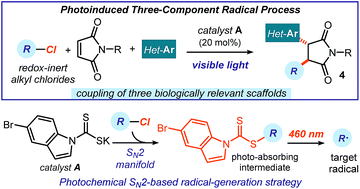
Chem. Sci., 2019,10, 5484-5488
https://doi.org/10.1039/C9SC00833K
Heterodinuclear zinc and magnesium catalysts for epoxide/CO2 ring opening copolymerizations
Eight heterodinuclear catalysts comprising Zn(II) and Mg(II) metal centres show high activity and selectivity for CO2/epoxide ring-opening copolymerization. Detailed kinetic analyses are reported and a chain-shuttling mechanistic hypothesis proposed.
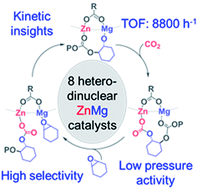
Chem. Sci., 2019,10, 4618-4627
https://doi.org/10.1039/C9SC00385A
Photoinitiated carbonyl-metathesis: deoxygenative reductive olefination of aromatic aldehydes via photoredox catalysis
Carbonyl–carbonyl olefination, known as McMurry reaction, represents a powerful strategy for the construction of olefins.
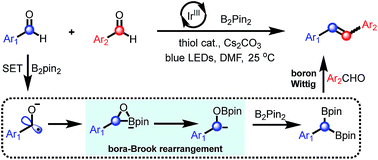
Chem. Sci., 2019,10, 4580-4587
https://doi.org/10.1039/C9SC00711C
Selective cleavage of lignin and lignin model compounds without external hydrogen, catalyzed by heterogeneous nickel catalysts
This work reports an economical and environmentally friendly, external hydrogen-free method for the selective cleavage of lignin and lignin model compounds into value-added chemicals.

Chem. Sci., 2019,10, 4458-4468
https://doi.org/10.1039/C9SC00691E
Nickel-catalyzed C–N bond activation: activated primary amines as alkylating reagents in reductive cross-coupling
The reductive cross coupling of pyridinium salts derived from readily available primary alkyl amines with aryl halides has been achieved under mild reaction conditions using a nickel catalyst.
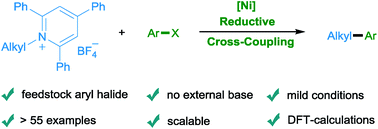
Chem. Sci., 2019,10, 4430-4435
https://doi.org/10.1039/C9SC00783K
Dithiane-directed Rh(III)-catalyzed amidation of unactivated C(sp3)–H bonds
A Rh(III) catalysed dithiane directed C(sp3)–H amidation for the synthesis of usefully protected β-aminoaldehyde derivatives is described.

Chem. Sci., 2019,10, 3733-3737
https://doi.org/10.1039/C8SC05225E
Insights into the role of noncovalent interactions in distal functionalization of the aryl C(sp2)–H bond
How a series of noncovalent interactions (NCIs) determine the regiochemical outcome in a distal sp2 C–H functionalization reaction is presented.
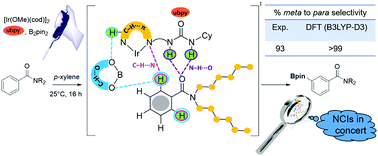
Chem. Sci., 2019,10, 3826-3835
https://doi.org/10.1039/C8SC05335A
Chiral phosphoric acid-catalyzed enantioselective construction of structurally diverse benzothiazolopyrimidines
Chiral phosphoric acid catalyzed the formal [4+2]-cycloaddition of 2-benzothiazolimines with enecarbamates to provide benzothiazolopyrimidines with up to 99% yield and >99% ee.

Chem. Sci., 2019,10, 3765-3769
https://doi.org/10.1039/C8SC05581E
Functionalized spirolactones by photoinduced dearomatization of biaryl compounds
Visible-light-induced dearomatization of non-phenolic 1,1′-biaryl-2-carboxylic acids has been developed by either aerobic photocatalytic or anaerobic photooxidative pathways.
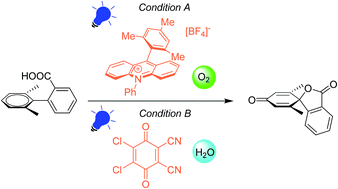
Chem. Sci., 2019,10, 3681-3686
https://doi.org/10.1039/C8SC05476B
Single-site metal–organic framework catalysts for the oxidative coupling of arenes via C–H/C–H activation
Heterogeneous palladium single-site MOF catalysts for the oxidative coupling of arenes via C–H/C–H: superior TONs due to active site isolation.
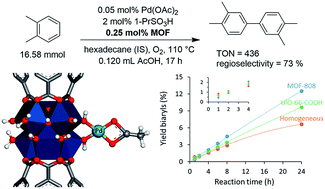
Chem. Sci., 2019,10, 3616-3622
https://doi.org/10.1039/C8SC05510F
Catalytic asymmetric allylation of aldehydes with alkenes through allylic C(sp3)–H functionalization mediated by organophotoredox and chiral chromium hybrid catalysis
We have developed a catalytic asymmetric nucleophilic allylation of aldehydes using simple alkenes as pronucleophiles without relying on stoichiometric metals.
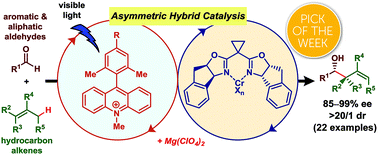
Chem. Sci., 2019,10, 3459-3465
https://doi.org/10.1039/C8SC05677C
Nickel-catalyzed anti-Markovnikov hydroarylation of alkenes
We have developed a nickel-catalyzed anti-Markovnikov hydroarylation of alkenes using aryl halides as coupling partners.

Chem. Sci., 2019,10, 3231-3236
https://doi.org/10.1039/C8SC05445B
Nickel-catalyzed oxidative C–H/N–H annulation of N-heteroaromatic compounds with alkynes
The reaction of N-heteroaromatic compounds, such as 2-aryl-pyrrole, benzimidazole, imidazole, indole, and pyrazole derivatives, with alkynes in the presence of a catalytic amount of a nickel complex results in C–H/N–H oxidative annulation.

Chem. Sci., 2019,10, 3242-3248
https://doi.org/10.1039/C8SC05063E
Enantioselective intramolecular C–H amination of aliphatic azides by dual ruthenium and phosphine catalysis
By combining a chiral-at-metal ruthenium catalyst with catalytic amounts of tris(p-fluorophenyl)phosphine (both 1 mol%), the challenging catalytic enantioselective ring-closing C(sp3)-H amination of unactivated aliphatic azides has been achieved with high enantioselectivities.
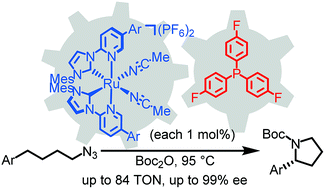
Chem. Sci., 2019,10, 3202-3207
https://doi.org/10.1039/C9SC00054B
Low overpotential water oxidation at neutral pH catalyzed by a copper(II) porphyrin
Low-overpotential water oxidation catalyzed by copper(II) porphyrin to produce O2 in neutral aqueous solution and H2O2 in acidic solution.
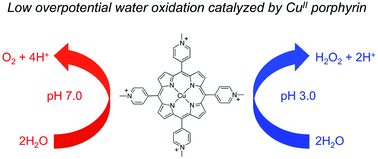
Chem. Sci., 2019,10, 2613-2622
https://doi.org/10.1039/C8SC04529A
Cathodized copper porphyrin metal–organic framework nanosheets for selective formate and acetate production from CO2 electroreduction
Highly selective and effective formate and acetate production from CO2 electroreduction on cathodized metal–organic framework nanosheets.
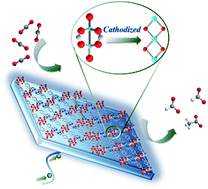
Chem. Sci., 2019,10, 2199-2205
https://doi.org/10.1039/C8SC04344B
Surface reconstruction of cobalt phosphide nanosheets by electrochemical activation for enhanced hydrogen evolution in alkaline solution
The surface reconstruction of cobalt phosphide nanosheets is investigated by an in situ electrochemical strategy for enhanced hydrogen evolution.
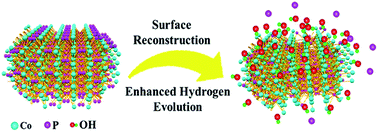
Chem. Sci., 2019,10, 2019-2024
https://doi.org/10.1039/C8SC04589E
Electronic synergism of pyridinic- and graphitic-nitrogen on N-doped carbons for the oxygen reduction reaction
Prydinic and graphitic nitrogen both contributes to the activity for oxygen reduction reaction (ORR).
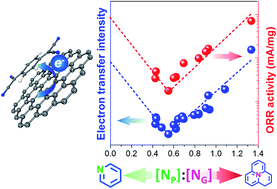
Chem. Sci., 2019,10, 1589-1596
https://doi.org/10.1039/C8SC04596H
Nickel-catalyzed allylic defluorinative alkylation of trifluoromethyl alkenes with reductive decarboxylation of redox-active esters
Synthesis of functionalized gem-difluoroalkenes was achieved through nickel-catalyzed allylic defluorinative alkylation of trifluoromethyl alkenes with reductive decarboxylation of redox-active esters.

Chem. Sci., 2019,10, 809-814
https://doi.org/10.1039/C8SC04335C
Colloidal tectonics for tandem synergistic Pickering interfacial catalysis: oxidative cleavage of cyclohexene oxide into adipic acid
Supramolecular preorganization can provide useful architectures for colloidal building and catalytic applications.
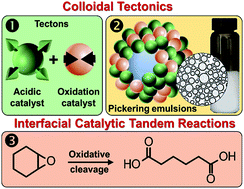
Chem. Sci., 2019,10, 501-507
https://doi.org/10.1039/C8SC03345E
About this collection
This specially curated collection pulls together some of the most popular articles from 2019 and 2020 in the field of catalysis. The collection presents some outstanding contributions to the field, ranging from nickel-catalysed C-N bond activation to the development of catalysts for enhanced hydrogen evolution, and as with all Chemical Science articles – they are all completely free to access and read. We hope you enjoy browsing through this collection.
See also:
Most popular 2019-2020 inorganic, main group and crystal engineering chemistry articles
Most popular 2019-2020 materials and energy chemistry articles
Most popular 2019-2020 physical and theoretical chemistry articles
Most popular 2019-2020 organic chemistry articles
Most popular 2019-2020 analytical chemistry articles
Most popular 2019-2020 supramolecular chemistry articles
Most popular 2019-2020 chemical biology articles
Most popular 2019-2020 review articles